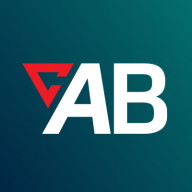

We performed a comparison between ActiveBatch Workload Automation and Automic Workload Automation based on our users’ reviews in five categories. After reading all of the collected data, you can find our conclusion below.
Features: ActiveBatch Workload Automation is highly regarded for its flexibility, simplicity, and ready-made tasks. It provides live monitoring, automatic scheduling, and effective resource management. Automic Workload Automation receives acclaim for its strength, scalability, and straightforward integration. It enables control over various operating systems and products, offering a wide array of features and a user-friendly interface.
ActiveBatch Workload Automation can be enhanced in areas such as managed file transfer, licensing, cloud aspect, user interface, reliability of triggers, monitoring dashboard, price, documentation, support, and integration capabilities. Automic Workload Automation requires improvement in automation sets, language support, functionality, interface, web-based edition, file transfer, pricing, and support.
Service and Support: ActiveBatch Workload Automation has been praised for its customer service, specifically its helpful and responsive technical support. However, there are concerns about the service model and availability of the hotline. Automic Workload Automation has received mixed reviews, with some customers appreciating quick response times and helpful knowledge articles. However, others have faced challenges in reaching support and experienced delays in issue resolution.
Ease of Deployment: The setup process for ActiveBatch Workload Automation is straightforward and uncomplicated, although it can be slightly challenging when implementing it on various operating systems. The initial setup for Automic Workload Automation can be time-consuming and intricate, taking anywhere from one to five days.
Pricing: ActiveBatch Workload Automation is highly regarded for its flexible and reasonably priced setup cost. Users find it to be competitive when compared to other tools. Automic Workload Automation has experienced pricing changes. While some users view it as expensive, they still consider it affordable in comparison to similar solutions.
ROI: Active Workload Automation has been highly regarded for its ability to generate positive financial outcomes, resulting in a notable increase in net revenue ranging from 20% to 30%. Automic Workload Automation did not provide much ROI for users and was perceived as an added expenditure.
Comparison Results: ActiveBatch Workload Automation is the preferred choice when compared to Automic Workload Automation. Users appreciate ActiveBatch for its straightforward setup process and intuitive interface, while Automic is acknowledged to have different degrees of complexity. ActiveBatch is also praised for its versatility, offering prebuilt jobs and a user-friendly configuration.
| Product | Market Share (%) |
|---|---|
| Automic Automation | 7.9% |
| ActiveBatch by Redwood | 2.8% |
| Other | 89.3% |


| Company Size | Count |
|---|---|
| Small Business | 10 |
| Midsize Enterprise | 13 |
| Large Enterprise | 46 |
| Company Size | Count |
|---|---|
| Small Business | 19 |
| Midsize Enterprise | 14 |
| Large Enterprise | 66 |
ActiveBatch by Redwood enhances efficiency with features like job scheduling, integration, and real-time monitoring. It supports diverse platforms, automates tasks, and offers a single-pane view with robust security.
ActiveBatch streamlines automation by offering drag-and-drop functionality, pre-built job steps, and native integrations. Its customizable workflows and alert system aid in managing complex workloads like data processing and server monitoring across hybrid environments. While it effectively reduces manual errors and enhances productivity, areas like navigation and support for cloud platforms need enhancement. New users may face challenges due to its complexity and steep learning curve, and further improvements in reporting, mobile access, and training could provide additional support to users.
What important features does ActiveBatch offer?In finance, ActiveBatch is implemented for orchestrating batch processes and data management. The healthcare industry utilizes it for automating patient data updates and server monitoring, while the retail sector benefits from file transfers and inventory management automation.
Automic Automation offers a web-based GUI for high scalability and flexibility, integrating with platforms like SAP and Oracle. It promotes efficient process automation and supports multiple OS environments, benefiting diverse industries with its robust predictive capabilities.
Automic Automation facilitates process automation and workload management, providing valuable integration with applications like SAP and Oracle. It supports a wide range of operating systems and environments, enabling seamless workflow automation. It features a web-based interface accessible across devices, ensuring scalability and flexibility for complex job automation. Users find its predictive capabilities and platform support instrumental in enhancing operations, although improvements are noted in reporting, cloud integration, and documentation. Licensing and pricing structures also present room for optimization, along with workflow dependency management and smoother upgrade paths.
What are the key features of Automic Automation?Automic Automation sees implementation in industries like banking, finance, and telecommunications, where it automates ERP systems, schedules batch jobs, integrates workloads, and manages file transfers. By supporting SAP, Oracle, and ETL tasks, it aids efficiency and workload automation across varied environments including cloud and mainframe systems.
We monitor all Workload Automation reviews to prevent fraudulent reviews and keep review quality high. We do not post reviews by company employees or direct competitors. We validate each review for authenticity via cross-reference with LinkedIn, and personal follow-up with the reviewer when necessary.